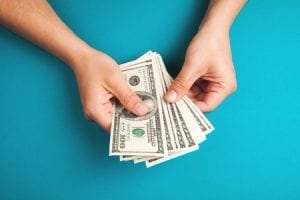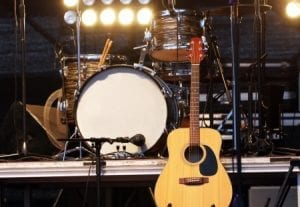Royalties Simplified
Understanding royalties can initially be changeling and confusing. The depth of royalties can quickly get complicated and just looking at the initial structure can take you down a rabbit hole. It's important to learn the basics in order to move forward and start collecting any money that's owed to you. Here we're breaking down the type of royalties that are available to artists and the basic's of what they entail.

A Musical Composition consists lyrics, chords, melodies etc. and are the foundation of a song. The person who created the music composition is the writer or the copyright owner of their song. If you retain your own publishing, all royalty fees will go directly to you. If you’re an artist with a publishing deal, a percentage of your royalties will be paid to your publisher and then you can obtain the rest.
You can earn money through:
- Mechanical Royalties
- Performance Royalties
- Licenses for Synchronization
- Licenses for Sampling and
- Sheet Music Print Rights
Mechanical Royalties
Mechanical Royalties are fees that are owed to the copyright owner of a song when that song is reproduced and distributed to the public.
- For example, if someone else records and distributes your song
- On CD or Vinyl
- A download to be purchased
- A ringtone
- Or streamed on demand through radio and services like Spotify
- You should receive a mechanical royalty in all these instances because you gave them the right to use your song.
PublicPerformance Royalties

Performance Royalties are fees that are paid to the copyright owner of a song, when the song is performed publicly or broadcast.
What is considered a Broadcast or Public Performance?
Any place your music is played and can be heard by a member of the public outside the scope of immediate family and friends.
If the song is
- broadcast on the radio
- a commercial
- a video game
- a movie
- a TV show
- If your song is downloaded on any internet services, if your song is streaming on Pandora, Spotify, etc.
- If your song is played in a store, a mall, a hotel, an elevator, a restaurant, a shopping mall, a sport arena. ANYTIME your recorded or live song is played in public
Or, If your song is preformed at a live venue.
Even if YOU'RE the one performing the song.
Sometime songwriters assume they are only owed a royalty if someone else is playing their song live. It’s important to note that as the copyright owner, you should receive a royalty every time you play your own music.
Licenses for Sampling
The copyright owner is also due a royalty anytime someone uses a piece of their song. If someone wants to use a portion of your song, they need to obtain a license for sampling first which is you giving your permission and then you as the copyright owner of that song is owed a royalty each time that song is played.
Sampling, best explained, is when a person reuses a certain section of another’s recording and puts that section into a new recording of their own.
Examples of this could be:
- drum section
- guitar rift
- a chorus
- a verse
Licenses for Synchronization
You can receive a Synchronization Royalty whenever someone takes your song and syncs it with any type of visual media.
Like Sampling, if someone wants to use your song to sync with visual media, they need permission first (in this case they would need to obtain a synchronization license) and the copyright owner of that song is owed a royalty each time that visual media is played.
Examples of this would be:
- If someone covers your song, makes a video of it and uploads it on You-tube,
- If your song is used in the background of any other type of Digital Video or DVD.
Even if it’s only a small clip of the song, you can receive a royalty.
Sheet Music for Print Rights

You can also receive a royalty if someone wants to print the lyrics, notes, or sheet music to a song you wrote. Here they would need to obtain a license of "sheet music for print rights". No one has the right to reprint or rearrange your song on paper without you collecting a royalty.
Where Do You GoFromHere?
Now that you have more of an understanding of the different types of royalties which are available, how do you track these royalties?
To learn more about Performance Rights Organizations and Mechanical License agencies, check out our upcoming articles.




